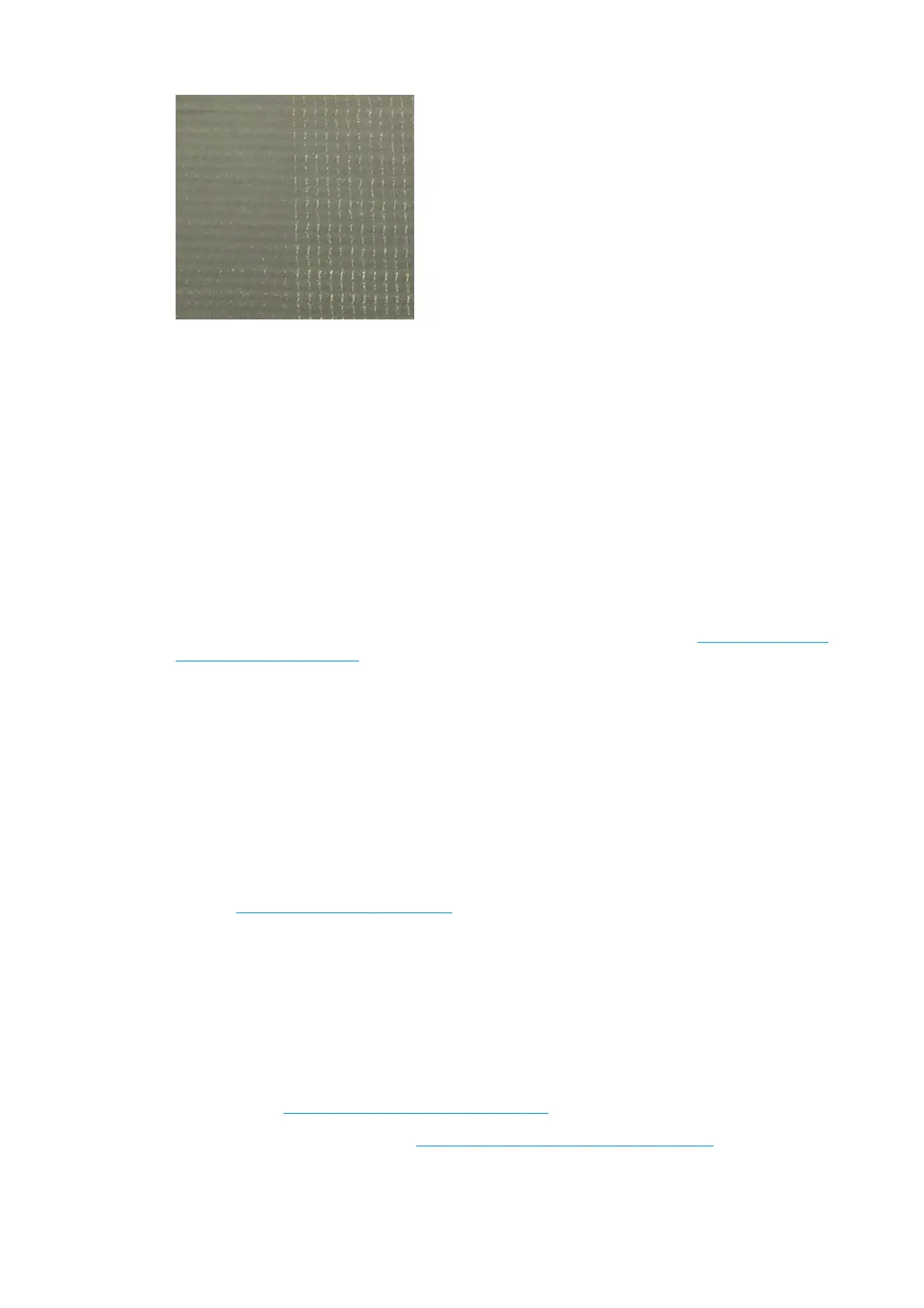It is
dicult to decide whether this kind of problem is due to wetting or to dot placement error
(described below). The type of grain could be a clue: in the case of wetting issues, dots tend to aggregate
into bigger dots, with empty spaces in between. A magnifying glass can be useful to examine the print in
more detail.
Here are some tips for solving this problem:
◦
Increase the optimizer level.
◦
Increase the drying power.
◦
Increase the number of passes.
◦
Change from 6 to 4 colors (less ink on the substrate).
●
Printhead alignment. This is a clear contributor to grain. If printheads are not correctly aligned, the
misplaced dots could correlate directly with the severity of the graininess.
To check printhead alignment, print the printhead alignment diagnostics plot (see
Printhead alignment
diagnostics plot on page 140). As a g
eneral rule, the biggest contributors to grain caused by printhead
alignment are (in this order):
◦
Bidirectional alignment
◦
Intra-color alignment (alignment between the two printheads of the same color)
◦
Inter-color alignment (alignment between dierent colors)
Here are some tips for solving this problem:
◦
If the printhead alignment was done with a dierent substrate of dierent thickness, probably a
new printhead alignment is needed.
◦
Fine-tune the alignment by identiying the oenders in the printhead alignment diagnostics plot.
See
Alignment procedure on page 137.
●
Subs
trate advance. Before trying to adjust any parameter, make the following checks:
◦
Check that no substrate-advance factor was set earlier that could prevent the substrate-advance
sensor from working correctly.
◦
Run the diagnostics to check that that the substrate-advance sensor is not dirty.
Grain in a print can be increased by incorrect substrate advance, due to mispositioning of the dots.
To check the substrate advance, go to the Internal Print Server and select Printer > Advance
Calibration. See
Substrate-advance test print on page 147.
T
o correct the substrate advance, see
Substrate-advance compensation on page 146. In mos
t cases, this
will solve the problem. However, you are recommended to run the OMAS Diagnostic Tests from the Print
330 Chapter 10 Troubleshoot print-quality issues ENWW

